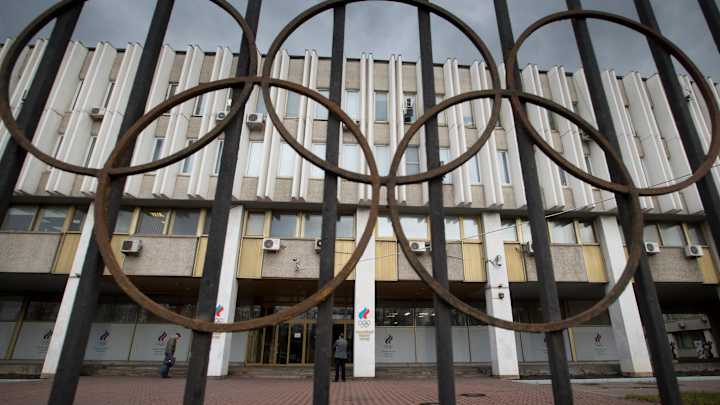INSIDE THE REPORT: Doping scheme had magicians, cocktails

The 97-page report into state-directed doping of Russian athletes is full of details on alleged wrongdoing dating back years. It also includes a number of references and details more likely to be found in a Cold War-era spy novel:
---
DRINK THE DUCHESS
The report relies heavily on allegations made by the former director of the Moscow laboratory at the heart of the doping scandal, Dr. Grigory Rodchenkov. According to the report, Rodchenkov several years ago noted that ''the quality of steroids and other PEDs that the coaches were providing to their athletes was becoming suspect'' and it was becoming difficult to know how safely they could be administered without being detected.
So he took steps.
''After he became laboratory director, and in furtherance of his responsibility to improve Russian sport performance by covering up doping, Dr. Rodchenkov developed a steroid cocktail optimized to avoid detection,'' the report says. ''Initially, that cocktail consisted of oral turinabol (dehydrochloromethyl-testosterone), oxandrolone and methasterone.''
How was it administered?
''The steroids were dissolved in alcohol (Chivas for the men and vermouth for the women),'' McLaren writes. ''The solution was then swished in the mouth in order to be absorbed by the bucal membrane and then spit out. Dr. Rodchenkov's research indicated that, with the laboratory technology available at the time, the detection window for the steroids in the cocktail would not exceed 3-5 days.''
That's quite a cocktail. It even had a name.
''Dr. Rodchenkov's evidence is that, although he designed the cocktail, he did not make it or distribute it. Rather, the cocktail was distributed to various sport federations by Irina Rodionova, who worked for the CSP, a subsidiary organization of the (Ministry of Sport),'' the report says. ''Rodionova nicknamed the cocktail `Duchess' after a traditional Russian drink.''
---
MOUSE HOLE
The McLaren report confirmed reports that urine samples for Russian athletes at the Winter Games were swapped out for clean samples through a ''mouse hole'' in the wall at a laboratory in Sochi.
The hole was needed because the Sochi lab was also occupied by international observers and others, requiring secrecy - and creativity. The Russian Federal Security Service, a descendent of the KGB and key player in the scheme, played a key role, according to the report.
''Early architectural drawings of the Sochi Laboratory show just how important the FSB were to the execution of the plan as they had their own dedicated rooms within the laboratory building,'' the report said. ''Indeed it was the FSB who performed the critical role of opening the B sample bottles using what they thought was their undetectable method.''
Still, how to swap tainted samples for clean ones?
''The quaint solution of passing dirty samples through a mouse hole drilled between the aliquoting room in the secure area of the laboratory and the adjacent `operations' room on the exterior of the secure area was suggested by Dr. Rodchenkov's second in command, Yuri Chizov. This scheme was approved by Deputy Minister (Yuri) Nagornykh and Chizhov and FSB (officer Evgeny) Blokhin traveled on their own to Sochi to arrange the drilling of the mouse hole. With the plan's linchpin in place, the hijacking of the Sochi Games could go on unobstructed by international observers and any interference.''
As for Blokhin, the report notes that he was a key handler of tainted samples and he ''had a security clearance to enter the laboratory under the guise of being a sewer engineer employed by engineering company Bilfinger.''
---
THE MAGICIANS
According to the report, the World Anti-Doping Agency notified Rodchenkov in December 2014 that a surprise inspection of the Moscow laboratory was coming in a few days. This caused ''significant anxiety'' at the lab and Russia's Ministry of Sport because the facility held a ''large quantity of positive but reported as negative'' urine samples. A separate anti-doping report found that Rodchenkov had destroyed 1,417 samples, but he still considered the lab at risk because of 37 specific samples that were going to be collected by WADA.
Five days before the WADA visit, ''Rodchenkov took this problem to Deputy Minister (Yuri) Nagornykh'' and they decided that some of the false reports could be explained, the report said. ''As to the remaining samples, Dr. Rodchenkov recalls that Deputy Minister Nagornykh stated that he would arrange for the `magicians' to come. Dr. Rodchenkov understood that Deputy Minister Nagornykh was referring to the FSB as the `magicians.'''
That same evening, the report says, Blokhin arranged for other FSB agents to enter the laboratory.
''No laboratory staff witnessed the FSB's presence in the laboratory, however the next morning the caps of the remaining samples were opened so that the urine in them could be swapped,'' the report says.
---
Online:
The McLaren Report: http://www.insidethegames.biz/media/file/37086/Independent%20Commission%20report.pdf
